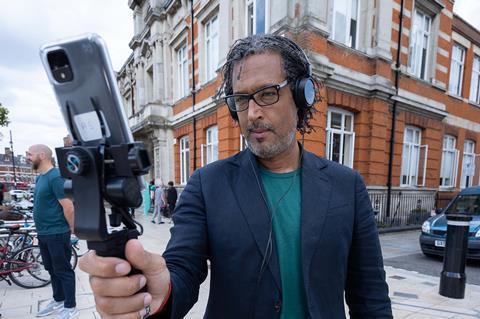Inclusion and accessibility strategies are at the heart of the UK’s training and accelerator programmes for emerging technologies.

“Who makes the metaverse makes a difference to who the metaverse is designed for,” observes Angela Chan, head of inclusion at StoryFutures, the National Centre for Immersive Storytelling run by the National Film and Television School (NFTS) and Royal Holloway, University of London.
For the last five years, StoryFutures has been embedding inclusion strategies — aimed at creatives and users — into training and accelerator programmes for emerging technologies. It is all to ensure the future of immersive experiences is as open and accessible as possible.
Leading the charge is the Inclusive Design Accelerator (IDA), an eight-week programme developed by StoryFutures and InGame with consultants Open Inclusion and XR Access. It set out to test and embed inclusive innovation concepts for everyone — from people with hearing impairments, blind and partially sighted people to those with disabilities.
Cardiff-based Sugar Creative, a leading UK creative innovation studio specialising in immersive storytelling through augmented reality (AR) and virtual reality (VR), is one of two companies that took part in IDA. Dundee-headquartered indie games studio Hyper Luminal Games also participated.
“The benefit from the IDA programme was two-fold,” says Will Humphrey, creative and innovation director at Sugar Creative. “One was being given the time and budget to create the ‘British Sign Language to VR’ toolkit, something that would have been difficult to find funding for due to the deferred commercial gain and specific user focus.”
The programme also offered unparalleled advice and access to experts, in particular specialists from Royal Holloway and Open Inclusion, which was vital to Sugar Creative’s project.
Crucially, adds Humphrey, the IDA programme underlined a shared belief among participants that it was possible to effect positive change for inclusion strategies through the application of emerging technologies.
Another pioneering programme is StoryTrails, a UK-wide immersive storytelling project led by StoryFutures. In 2022, StoryTrails worked with 50 diverse creatives across the UK to develop AR trails, VR experiences and 3D maps before touring them around 15 libraries in cities across the UK, placing inclusivity and accessibility at its core.
Talent pipeline

“Embedding equality, diversity and inclusion into the metaverse requires a representative workforce,” says Chan. “Ensuring authentic representation and voice is vital. It’s almost impossible to get it right without a diverse team and user-testing across a broad base of people.”
Chan says tackling the talent pipeline and targeting under-represented groups early on through education — allowing them to see creative technology as a career option — will help to push the industry forward.
The workforce is becoming more diverse so cultural awareness among creative technology teams is vital, as is being mindful of the pressures on young freelancers and the very specific challenges of also being part of a marginalised group.
For developers, coding bias remains one of the biggest barriers to inclusion and equality. Addressing it as early as possible in the production process will help.
“Technology ‘fails’ happen through lack of thought and diverse perspectives,” says Chan. “Accessibility, and barriers to people with a range of disabilities, can take on new forms with technology. Well-designed user testing and diversity in the team tends to flush out these issues early.”
Through the Inclusive Design Accelerator, StoryFutures has worked towards developing new standards in accessibility for extended reality (XR), while StoryTrails has raised the bar for developing diverse talent. More than 35% of its beneficiaries are from minority backgrounds, 19.5% identify as disabled and 19.5% are working class.
“Central to change is the adoption of a different design mindset,” says Humphrey. “One where companies look at and take responsibility for every design decision that excludes users and changes it.”
“When it comes to innovation projects, which are often complex and experimental by nature, it’s all too easy to leave the thinking about inclusivity until last,” notes Becky Gregory-Clarke, head of immersive at StoryFutures and the NFTS. “Let’s not collectively make that mistake with immersive storytelling and the metaverse — we’re still at a relatively early stage in terms of developing the user experience. There’s the opportunity to make it part of the thinking from the outset.”
To find out more, visit storyfutures.com or @storyfutures

























